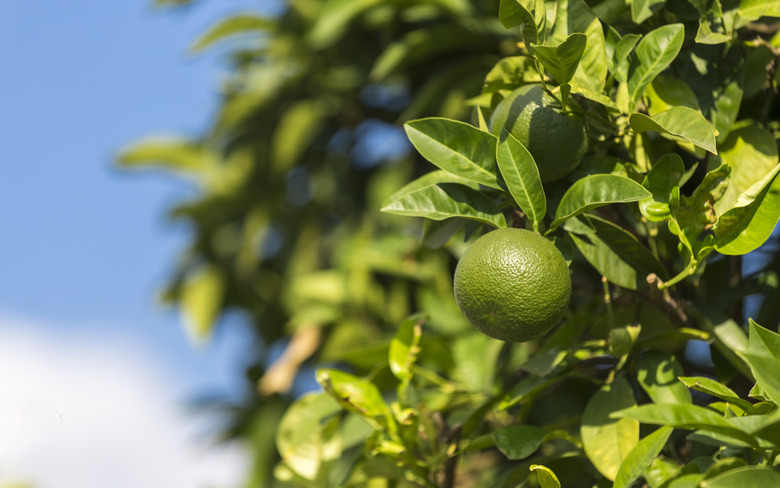Gardening: How To Grow Lime Trees From Seed
Learning how to grow a lime tree from seed is easy, but the resulting plant may not be what you expected.
Most commonly grown lime cultivars come from the Persian lime (Citrus x latifolia) or the key lime (Citrus x aurantifolia), both of which are grown within USDA plant hardiness zones 9b to 11a for their fragrant fruit and attractive appearance.
It's worth noting, however, that most lime varieties are grown from cuttings or grafts to duplicate their carefully selected traits. Lime trees can indeed also be grown from seed, and any ripe lime with seeds can provide enough seed to grow a new tree.
But seed-grown lime trees are less cold-tolerant than cloned trees, and they often take many years to bear fruit. In addition, the fruit is unlikely to share the same qualities as the original tree, potentially to the point of even being unpalatable.
Seed-grown lime trees are less cold-tolerant than cloned trees, and they often take many years to bear fruit. In addition, the fruit is unlikely to share the same qualities as the original tree—and may actually be unpalatable.
Why don't most limes have seeds?
Most limes found in supermarkets in the U.S. don't have seeds because those varieties are parthenocarpic, meaning their flowers don't require pollinating to produce fruit and thus don't produce seeds. This has the added benefits of extending their shelf life and making juicing easier.
Preparing Lime Seeds for Sowing
The trickiest part about gathering lime seeds is finding ripe limes, because most grocery store limes are sold unripe to enhance their sour flavor. Gathering limes directly from a tree where they have been allowed to reach full ripeness is best, but ripe limes can sometimes be found at farmers markets and smaller fruit markets. To prepare them for sowing:
1. Cut open the lime with a sharp knife that has been wiped down with rubbing alcohol to sanitize the blade. 2. Pick out the small, teardrop-shaped seeds and wipe them clean with a paper towel to remove any pulp. 3. (Optional) Soak the seeds in water for 24 hours before sowing, a step recommended by some experts. This helps soften the seed coat. 4. (Optional) Split or crack open the seed once it is softened, using small scissors. This can help aid germination. Snip the end of the seed coat and press it between your fingers to open it. If you choose to split the seed coat with scissors, be careful not to break or cut the seed in half.
Things Needed
- Knife
- Rubbing alcohol
- Small scissors
- Small plastic pot
- Potting soil
- Plastic wrap
- Propagation mat (optional)
- 10-10-10 or 7-9-5 fertilizer
Starting Lime Seeds in Pots
Lime seeds germinate quickly when kept under warm, bright conditions, but they must be sown immediately after being pretreated. Sow each lime seed in its own small plastic pot with drainage holes at the bottom.
Fill the pot with moist potting soil and tamp it down to collapse any air pockets. Sow the lime seeds at a depth of 1/2 inch right in the center of the soil. Cover the pots with plastic wrap to help hold moisture and warmth around the seeds while they germinate.
Set the pots near a bright window that receives direct sun all day. Lime seeds take roughly two weeks to germinate when temperatures stay above 70°F.
A propagation mat to warm the soil may be necessary to maintain the right temperature, but bottom heat will also dry out the soil quickly. So it is important to check the moisture level every day and moisten the soil if it feels nearly dry on the surface.
Tip
While germinating, lime seeds need to be in an environment that stays above 70°F even at night. Once they're seedlings, they still need to be grown in an environment about 60°F at all times.
Growing Lime Seedlings
**Temperatures:** Seed-grown lime tree seedlings are extremely temperature-sensitive and must not be exposed to cool conditions at a young age. Grow them indoors near a sunny, south-facing window where temperatures stay above 60°F at night year-round.
**Water and Humidity:** Water when the soil feels dry on the surface. Growers recommend maintaining humidity levels above 50%, which will help keep the foliage healthy while the seedlings grow larger. Wait at least one year after propagation before planting lime trees grown from seed into the garden.
**Transplanting:** Acclimate the seedlings to outdoor conditions for a couple of weeks before transplanting them in spring when temperatures warm to above 60°F at night. Persian lime trees should be grown in a sunny spot outdoors with fast-draining soil at least 20 feet from structures and other trees. Key lime trees are even more cold-sensitive than Persian limes and should be grown in pots and brought indoors in winter in all but the warmest climates.
